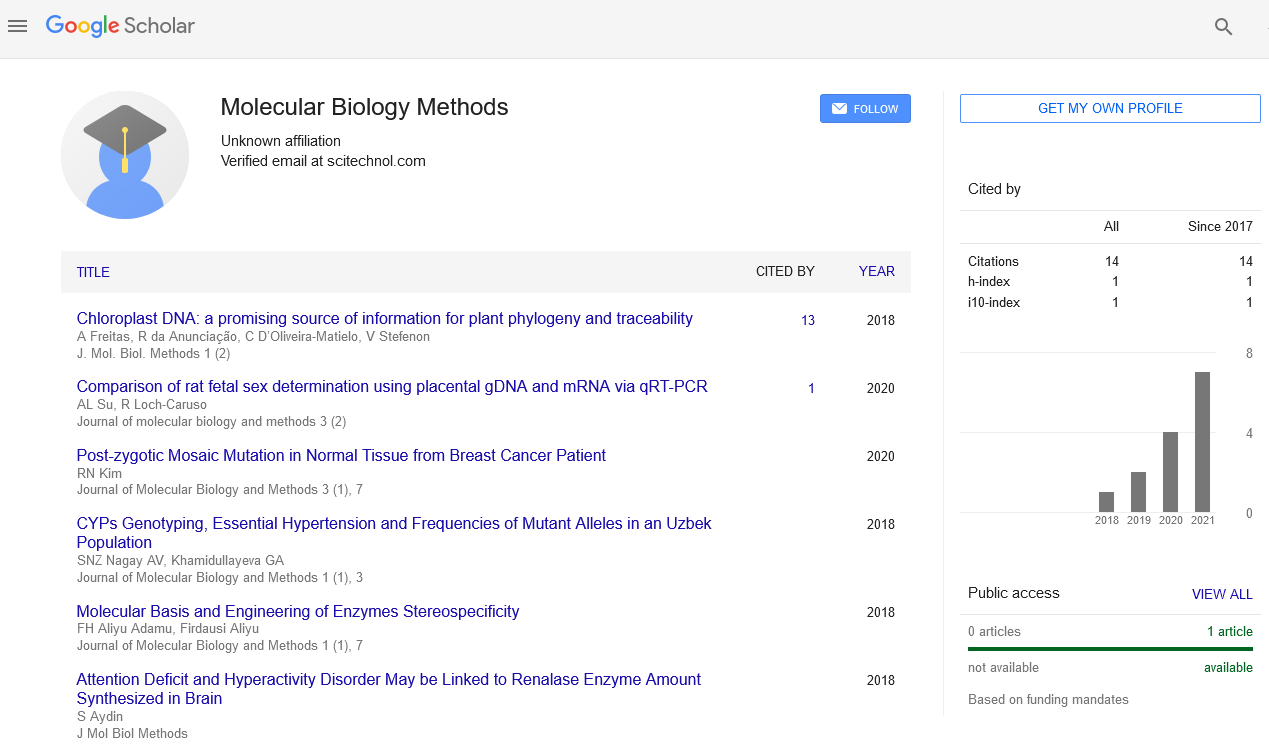Commentary, J Mol Biol Methods Vol: 7 Issue: 2
Structure and Functions of Biological Membranes: Membrane Biogenesis and Remodeling
John Perez*
1Department of Biophysics, Johns Hopkins University School of Medicine, Baltimore, United States of America
*Corresponding Author: John Perez,
Department of Biophysics, Johns Hopkins
University School of Medicine, Baltimore, United States of America
E-mail: perez@john.ac.edu
Received date: 28 May, 2024, Manuscript No. JMBM-24-140269;
Editor assigned date: 31 May, 2024, PreQC No. JMBM-24-140269 (PQ);
Reviewed date: 14 June, 2024, QC No. JMBM-24-140269;
Revised date: 21 June, 2024, Manuscript No. JMBM-24-140269 (R);
Published date: 28 June, 2024, DOI: 10.4172/JMBM.1000157
Citation: Perez J (2024) Structure and Functions of Biological Membranes: Membrane Biogenesis and Remodeling. J Mol Biol Methods 7:2.
Description
Membrane biology is a fascinating field that explores the structure, function, and dynamics of biological membranes, which are essential components of all living cells. These membranes not only define the boundaries of cells and organelles but also plays an important roles in cellular communication, signaling, transport, and energy production.
Biological membranes are primarily composed of lipids, proteins, and carbohydrates. The fundamental structural unit of a membrane is the lipid bilayer a thin, flexible sheet formed by two layers of lipid molecules. The most common lipids in biological membranes are phospholipids, which have a hydrophilic (water-attracting) head and hydrophobic (water-repelling) tails. This amphipathic nature allows phospholipids to spontaneously assemble into bilayers in aqueous environments, with the hydrophobic tails facing inward and the hydrophilic heads facing outward towards the aqueous solutions inside and outside the cell.
Embedded within this lipid bilayer are proteins, which can be classified into integral membrane proteins (spanning the lipid bilayer) and peripheral membrane proteins (associated with the membrane surface). These proteins serve various functions, including transport of molecules across the membrane, enzymatic activity, signal transduction, and structural support.
Functions of biological membranes
Biological membranes perform a multitude of vital functions essential for cell survival and function:
Cellular barrier: Membranes act as selective barriers that regulate the movement of ions, molecules, and substances into and out of the cell or organelles. This selective permeability is essential for maintaining cellular homeostasis.
Signal transduction: Membranes play a key role in receiving and transmitting signals from the cell's environment to its interior.
Receptor proteins on the cell membrane bind to specific signaling molecules (ligands), triggering intracellular responses that regulate processes such as growth, differentiation, and metabolism.
Cell adhesion: Membranes facilitate cell adhesion and interactions with neighboring cells and the extracellular matrix. This is essential for tissue organization, wound healing, and immune responses.
Energy production: Membranes house key components of the electron transport chain and ATP synthase complexes in mitochondria and chloroplasts, facilitating cellular respiration and photosynthesis, respectively.
Compartmentalization: Membranes partition the cell into distinct compartments, such as organelles (e.g., nucleus, mitochondria, endoplasmic reticulum), each with specialized functions and environments conducive to specific biochemical reactions.
Cells possess intricate mechanisms for synthesizing new membranes and adjusting their composition in response to environmental cues and cellular needs. Membrane biogenesis involves the coordinated synthesis and assembly of lipids and proteins into functional membranes, ensuring proper organelle function and cellular growth. This process is tightly regulated to maintain membrane integrity and function.
Membrane remodeling refers to the dynamic changes in membrane structure and composition that occur during cellular processes such as cell division, differentiation, and response to stress. Enzymes and proteins involved in lipid metabolism, membrane fusion, and fission plays an important roles in remodeling membranes to accommodate cellular changes and maintain homeostasis.
Membrane-associated diseases and therapeutic implications
Dysfunction in membrane structure or function can lead to various diseases and disorders. For example, defects in ion channel proteins can cause cystic fibrosis and cardiac arrhythmias, while mutations in membrane receptors can disrupt hormone signaling pathways implicated in diabetes and cancer.
Understanding membrane biology is essential for developing therapeutic strategies targeting membrane-associated diseases. Drug discovery efforts often focus on designing compounds that interact with specific membrane proteins or alter membrane properties to modulate cellular function and restore homeostasis.
Membrane biology is a dynamic and interdisciplinary field that continues to unveil the complexities of cellular organization and function. Biological membranes are not only structural barriers but also dynamic platforms for cellular communication, signaling, and metabolic regulation. Advances in membrane biology have profound implications for understanding health and disease, as well as for developing new therapeutic interventions aimed at targeting membrane-associated processes. As research in this field progresses, it promises to reveal deeper insights into the fundamental principles governing life at the cellular level.
 Spanish
Spanish  Chinese
Chinese  Russian
Russian  German
German  French
French  Japanese
Japanese  Portuguese
Portuguese  Hindi
Hindi 